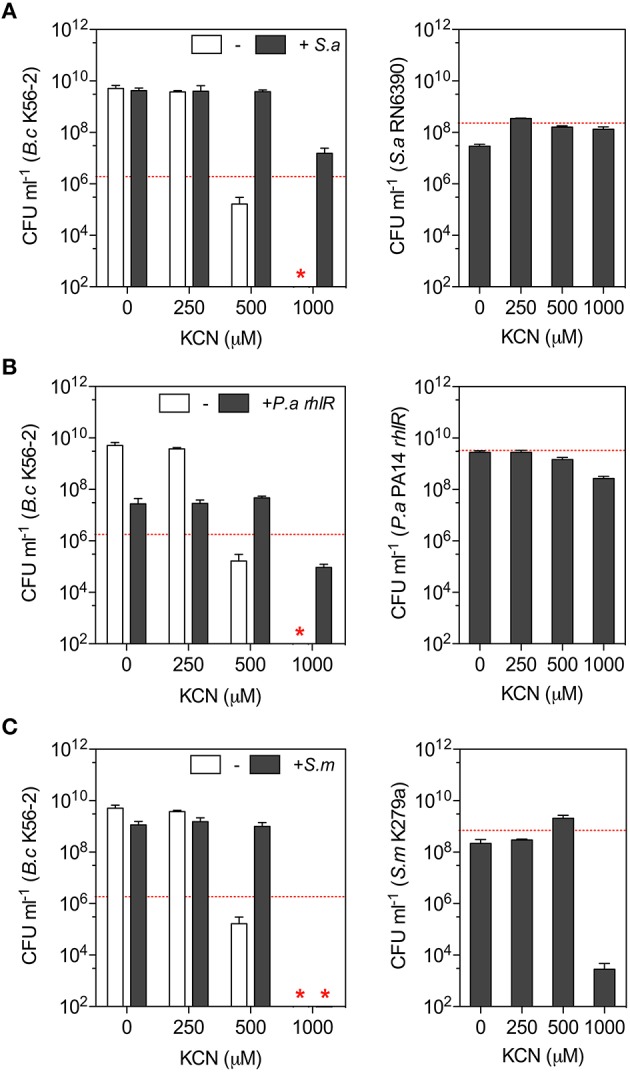Figure 4.

The impact of community composition on B. cenocepacia cyanide tolerance. B. cenocepacia K56-2 was co-cultured in LB medium with (A) S. aureus RN6390, (B) P. aeruginosa rhlR, and (C) S. maltophilia K279a for 24 h with increasing concentrations of KCN (0–1000 μM). Left panels: Viability of B. cenocepacia K56-2 after 24 h in the presence (gray bars) or the absence (white bars) of second bacterial species. Red star represents the absence of B. cenocepacia K56-2 CFU recovered from the co-cultures or below the detection limits and the dotted red lines represent B. cenocepacia K56-2 CFUs at time 0 (~2 × 106 CFU ml−1). Right panels: Viability/growth of (A) S. aureus RN6390, (B) P. aeruginosa rhlR, and (C) S. maltophilia K279a for 24 h in co-cultures with B. cenocepacia K56-2 and KCN. The dotted red lines represent the biomass after 24 h of these bacteria in absence of both B. cenocepacia and KCN. Data reported represent the mean ± SD of a minimum of three replicates.
